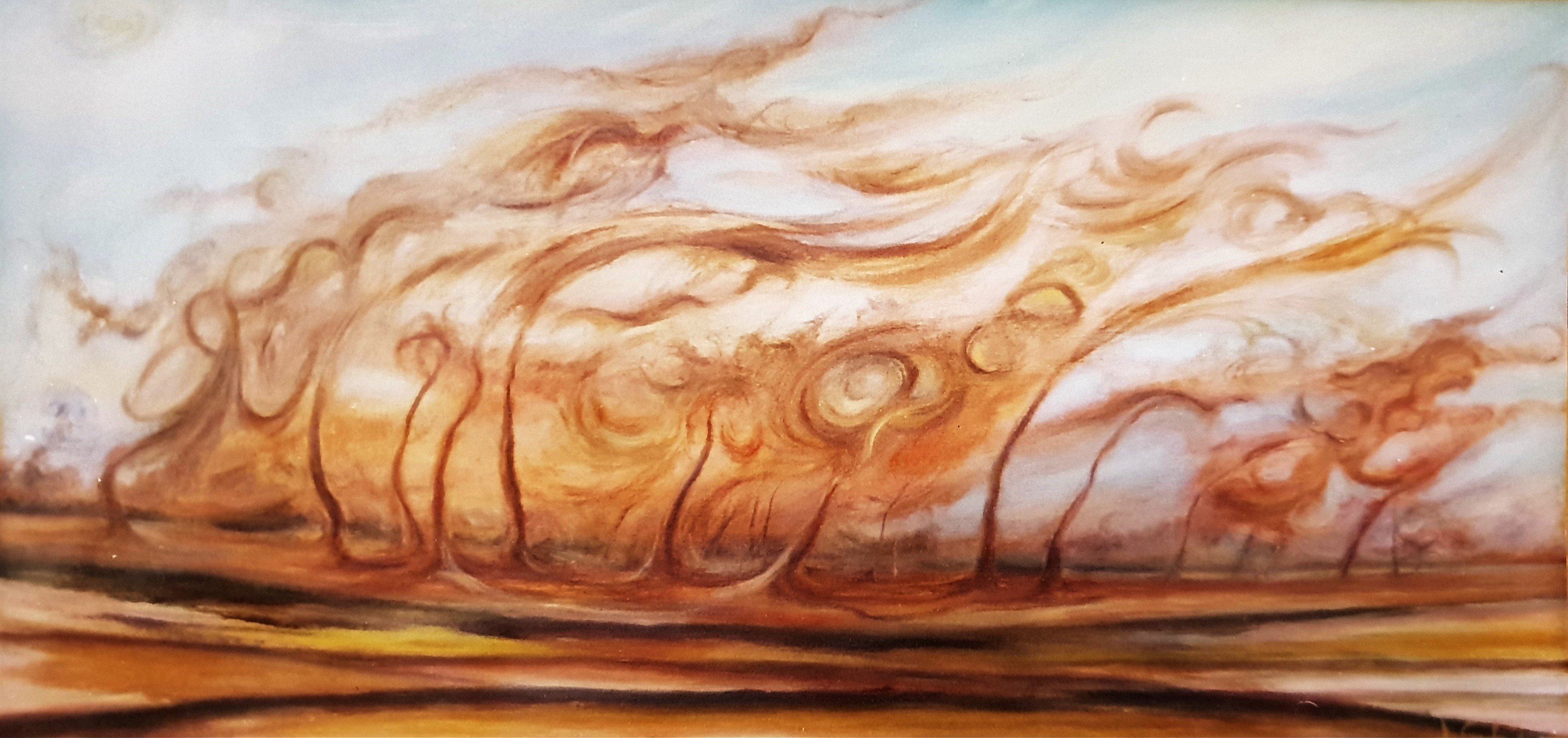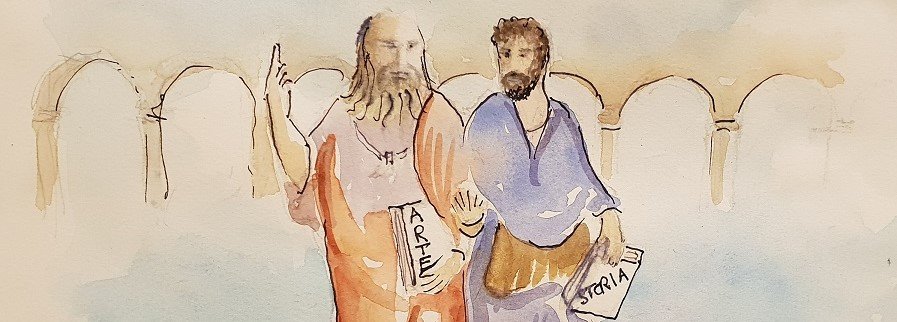
La danza dei vortici

olio su tela cm.120x60 - collezione privata
2 0 1 0

Buongiorno a tutta la comunità.
Per presentare questo mio dipinto, prendo riferimento da una vecchia lettura di alcuni scritti di Leonardo Da Vinci.
Il Genio indaga spesso nel campo sui fenomeni generatori di forze e moti, egli è l'artista del Rinascimento che più di ogni altro li osserva, li descrive e approfondisce con centinaia di tavole illustrate da schizzi capolavori.
Nel Codice Atlantico, custodito nella Biblioteca Ambrosiana di Milano, Leonardo fu il primo scienziato ad usare il termine "turbolenza" per descrivere il fenomeno del vortice ed i suoi studi sul moto delle acque e dell'aria, saranno le basi per la teoria moderna ad opera di Reynolds, Kelvin, Richardson e Kolmogorov.
La turbolenza è un sistema caotico in cui persistono numerosi vortici di flussi.
Quotidianamente possiamo osservare fenomeni di turbolenza, le volute arabescate del fumo di una sigaretta, l'acqua che viene risucchiata dal buco del lavandino sono dei chiari esempi.
Appassionato alle forze della natura che interagiscono con il paesaggio, nel mio lavoro ad olio dipingo
la rappresentazione di una serie di moti e vortici che danzano, rincorrendosi e allontanandosi tra loro.
Le temperature di colore che ho scelto, molto calde e intense nella parte centrale, lasciano immaginare un incendio a coronare il gioco di forze e di moto della scena dipinta.
Sono alberi danzanti, o linee di forza, curve o spiraliformi, alimentate dalla natura delle leggi fisiche che governano l'universo.
Spero che il mio lavoro sia stato di vostro interesse.
Un abbraccio non troppo turbolento da Armando Sodano
vi lascio con un capolavoro del Genio!

Studies of water passing obstacles and falling

immagine di pubblico dominio

English
Good morning to the whole community.
To present this painting of mine, I refer to an old reading of some writings by Leonardo Da Vinci.
The Genius often investigates the natural phenomena that generate forces and motions, he is the artist of the Renaissance who more than any other observes, describes and deepens the natural phenomena, with hundreds of tables illustrated by sketches masterpieces.
In the Codex Atlanticus, kept in the Ambrosian Library of Milan, Leonardo was the first scientist to use the term "turbulence" to describe the phenomenon of the vortex and his studies on the motion of water and air, will be the basis for the modern theory by Reynolds, Kelvin, Richardson and Kolmogorov.
Turbulence is a chaotic system in which numerous vortexes of flows persist.
On a daily basis we can observe turbulence phenomena, the arabesque scrolls of the smoke of a cigarette, the water that is sucked out of the hole in the sink are clear examples.
Passionate about the forces of nature that interact with the landscape, in my work in oil painting
the representation of a series of motions and vortexes that dance, chasing and moving away from each other.
The color temperatures I chose, very warm and intense in the central part, let us imagine a fire to crown the game of forces and motion of the painted scene.
They are dancing trees, or lines of force, curves or spiraling, nourished by the nature of the physical laws that govern the universe.
I hope my work has been of interest to you.
A hug not too turbulent by Armando Sodano




Vieni a trovarci sulla prima rivista dedicata al mondo dell'arte&storia
